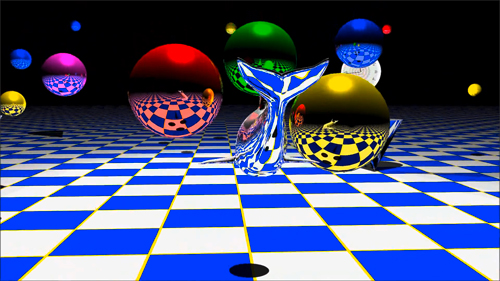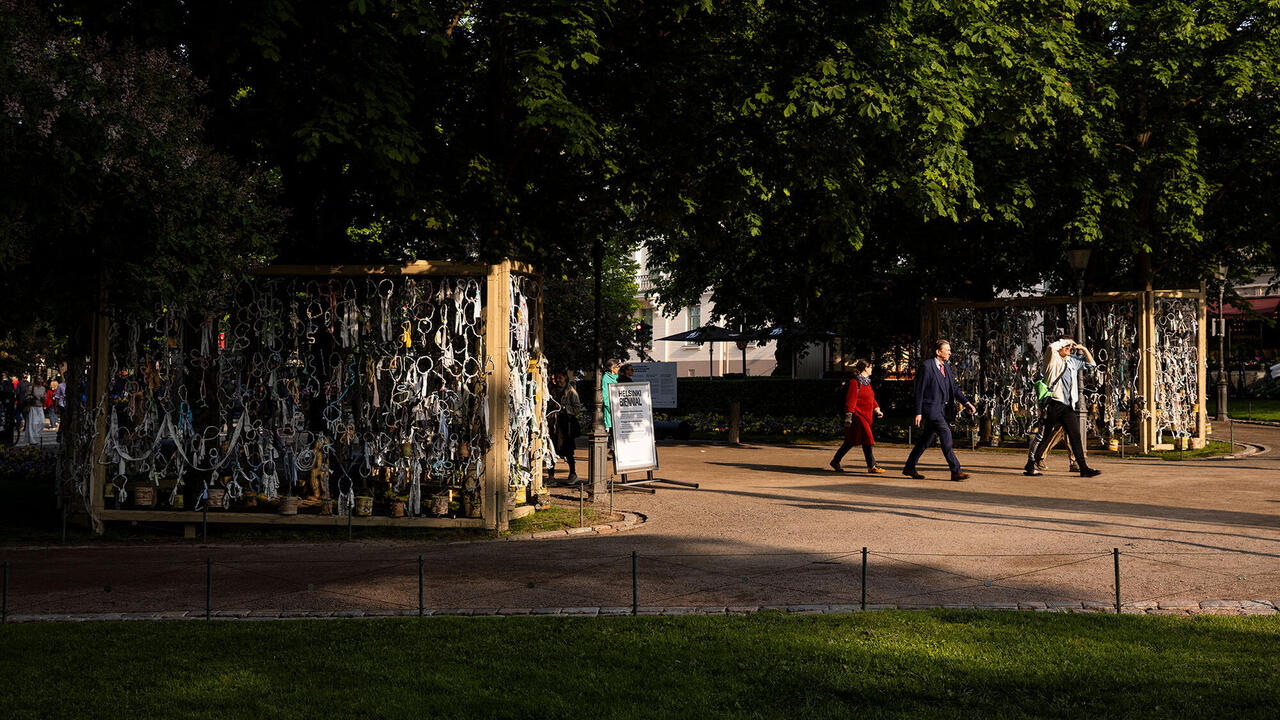Ghosts in the Machine
Casting light on the hidden narratives of power: the films of Jan Peter Hammer
Casting light on the hidden narratives of power: the films of Jan Peter Hammer

Neoliberal finance has a reputation for being obtuse and difficult to describe. Despite its amorphous, recurring collection of specialist vocabulary – ‘animal spirits’, ‘abstract’, ‘immaterial’, ‘the invisible hand’ – the field has, most keenly since the 2008 global recession, nonetheless sparked a new wave of sociopolitical and economic theory and nearly spawned its own genre within visual culture. The many film contributions aside – David Cronenberg’s 2012 adaptation of Don DeLillo’s Cosmopolis, for example, or Marc Bauder’s documentary portrait of an ex-investment banker in Master of the Universe (2013) – many visual artists are increasingly exploring the realm of neoliberal finance. Artists working with video such as Jan Peter Hammer, as well as Melanie Gilligan, Zachary Formwalt and the Danish collective Superflex, to name just a few, are taking up the dynamics and mechanisms of global capitalism, the relationship between the individual and market forces, and questions related to the production of goods and their visibility.

The subplots of Berlin-based Hammer’s works often support the notion that such topics shouldn’t be addressed through the distance of abstract criticism, but that economic realities inevitably reverberate in the art world: art and financial markets are two sides of the same coin. As part of his 2012 exhibition The Fable of the Bees at the Berlin gallery Supportico Lopez, Hammer employed a security guard to watch over a pile of money arranged on a table during business hours, a sum that was also his payment for the job. The work, That Which Is Seen and That Which Is Unseen (2012), translated labour and capital into an absurd equation of reciprocal negation. The guard idly enduring the circulating symbols and values in a gallery context inevitably called attention to art’s participation in the (symbolic) production of goods.

In Monarchs, Men & Monsters, an exhibition at LABOR in Mexico City this summer, this theme returned in full force. Together with a series of neon wall installations, Hammer presented a video entitled Monarchs & Men (2012). The inspiration for the intense, roughly 30-minute debate tackling the inequities and distortions of neoliberalism, is an imagined interview between Leo Tolstoy and John Davison Rockefeller published in 1913 by Maximilian Harden, a German author and journalist. Hammer transposed the setting to a high-end gallery and incorporated text and snippets from interviews from the entire political spectrum into the script writtten by Ana Teixeira Pinto. Additions included Bill Gates, Alan Greenspan, Ayn Rand, Alain Badiou, Jacques Rancière and Martha Rosler. The conversation’s protagonists are the artist Leonhard Gross (Felix Ensslin), banker and patron of the gallery Arthur Ashenking (John Quincy Long), the gallery owner (Daniel Hendrickson), Leonhard’s girlfriend Nadzia (Sarita Choudhoury, recognizable from the TV series Homeland) and an aspiring artist (Christian Serritiello). The characters are more archetypes than individuals: each of them, whose clichés are offset by their artificial eloquence, represents a particular type of discourse.
The neon sculptures in the exhibition – pop icons such as Hello Kitty, Cthulhu, a frowning smiley, but also diagrams and curves – were introduced as the creations of the aspiring artist from the video, Billy Neumann. Cross-references, fictional relationships and explicit connections between Hammer’s works are not uncommon. Monarchs & Men is roughly intended as a sequel to the video The Anarchist Banker (2010), in which Arthur Ashenking first appeared.
Hammer’s early video works – The Jungle Book (2013), as well as The Anarchist Banker, Monarchs & Men and The Fable of the Bees – are linguistically compressed arrangements of excerpts from literature, political economics, social theory and philosophy that acquire a theatrical tone through their context – be it a talk-show, dialogue, YouTube video or children’s show. Hammer boils each format down to its essence, leaving behind everything else: audience reactions, transitions, pauses, hesitations, half-articulated thoughts, as well as techniques for visual cohesion, extraneous changes in camera angles and cross-cuts – anything that would distract from the meat of the language. The performed nature of the texts transposes them into an alternate
reality which allows for the extrapolation of something along the lines of criticism – the utilitarian formulas of banker Arthur Ashenking would otherwise be difficult to digest.

‘I’m a freedom fighter,’ Arthur (‘just call me Art’) Ashenking tells TV presenter David Hall (played by Tomas Spencer) in The Anarchist Banker. The strange synergy of guerrilla- and George W. Bush-era rhetoric sets the tone. In a fictitious, post-Great Recession interview, modelled by Hammer after an American talk show, the ‘anarchist banker’ and former CEO of an international investment bank strings together allegedly rational arguments into a questionable line of reasoning. He militantly declares himself against social inequality (on account of his working class background and past as an activist during the Vietnam War and Civil Rights movements). Simultaneously, he spews polemics against the welfare state and the ‘tyranny of helpfulness’, arguing for a ‘natural order’ instead of the ‘evils of convention’ while peppering his speech with audacious speculations (killing a dozen capitalists wouldn’t change the status quo, but then again – ‘I’m not kidding’ – why not kill them?). He ultimately arrives at an imperious plea for unfettered capitalism in which he perfidiously links profit maximization and hyper-individualism with the rhetoric of freedom: ‘I succeeded. I worked, I struggled, I earned money, I earned more money and in the end I earned a lot of money … I was fighting the most powerful convention there is and I used whatever weapons I could … I freed myself. The one person I was able to free, I freed.’
Though the narrative is driven by contemporary social and economic climates, The Anarchist Banker is an adaptation of Fernando Pessoa’s 1922 short story of the same name, a dialogue between an affluent banker and his secretary. Pessoa’s story was inspired by his contemporary Artur Virgílio Alves dos Reis. Alves dos Reis, whose name is reminiscent of ‘Ashenking’, was guilty of the types of serious fraud that led to the depreciation of the Portuguese currency, the growing mistrust in the government and ultimately the fall of the First Portuguese Republic in 1926. Hammer turns Ashenking into an allegory for the neoliberal practices of contemporary capitalism.

Tilikum (2013), Hammer’s most documentary-style work, follows various diverging and circuitous paths, not unlike the irregular blueprint of financial markets. The 45-minute video opens with an emergency call from the SeaWorld Orlando theme park in Florida. On 25 February 2010 animal trainer Dawn Brancheau was pulled into a pool and held under water by a male orca named Tilikum until she drowned. Brancheau was his third victim. Hammer (unlike Werner Herzog in Grizzly Man, 2005) doesn’t dwell on the monumentality of the animals or the aura that their violence leaves behind. Instead he meticulously investigates the multifaceted parallels between science, the entertainment industry and the military – weaving a complicated web of connections, cross-references and footnotes linking seemingly unrelated topics. Hammer begins with the creation of the first ocean theme parks, the Cold War research agenda and the isolation tank experiments of neuroscientist and dolphin researcher John Cunningham Lilly (1915–2001); he then shifts to Behaviourism, conditioning processes and the psychological torture techniques used in the detention camps of Guantanamo and Abu Ghraib, eventually arriving at communication attempts with extraterrestrial species, experiments with LSD and types of zoophilia. Tilikum is a dense montage of archive materials (pictures and clips from news shows, scientific contexts, feature films and television series, book covers, diagrams, written documents, etc.) and original footage that Hammer shot on location in Florida with cameraman Christoph Obach in April 2013. A professional narrator’s voice calmly, though expeditiously, leads viewers through the labyrinthine material.

As Hammer reveals in Tilikum, Behaviourism, a conditioning model known for its stimulus-response approach, is still used to train orcas at SeaWorld today. The video exposes Behaviourism, entertainment and financial gain as close bedfellows. During his research, Hammer also unearths peripheral details that expand on the reciprocal relationships between the three fields. He discovers a quote by Ayn Rand in an edition of Quest for the Killer Whale (1982) by Ted Griffin, owner of aquariums and orca whales, and stipulates that Griffin was a convinced supporter of the free market (‘Ted is an advocate of individual freedom and the inherent responsibility, believing that the free market best encourages creativity and the realization of anyone’s ambition for a better life,’ explains the text on the book jacket). Even Tolstoy is circuitously worked into the narration: in 1929, Tolstoy’s grandson Ilya Andreyevich Tolstoy was one of the founders of Marine Studios in Florida, the first ocean theme park. Last but not least, the precarious alliance of art, capitalism, science and the military also figures. As well as John C. Lilly: his psychedelic experiments ultimately turn him into a Timothy Treadwell figure, some-one who preferred to withdraw into the flotation tank – using LSD in order to ‘become a dolphin’, as the narrator puts it. In the narration Lilly becomes a welcome embodiment of disturbance, a wrench in the machine.
Translated by Yana Vierboom
















